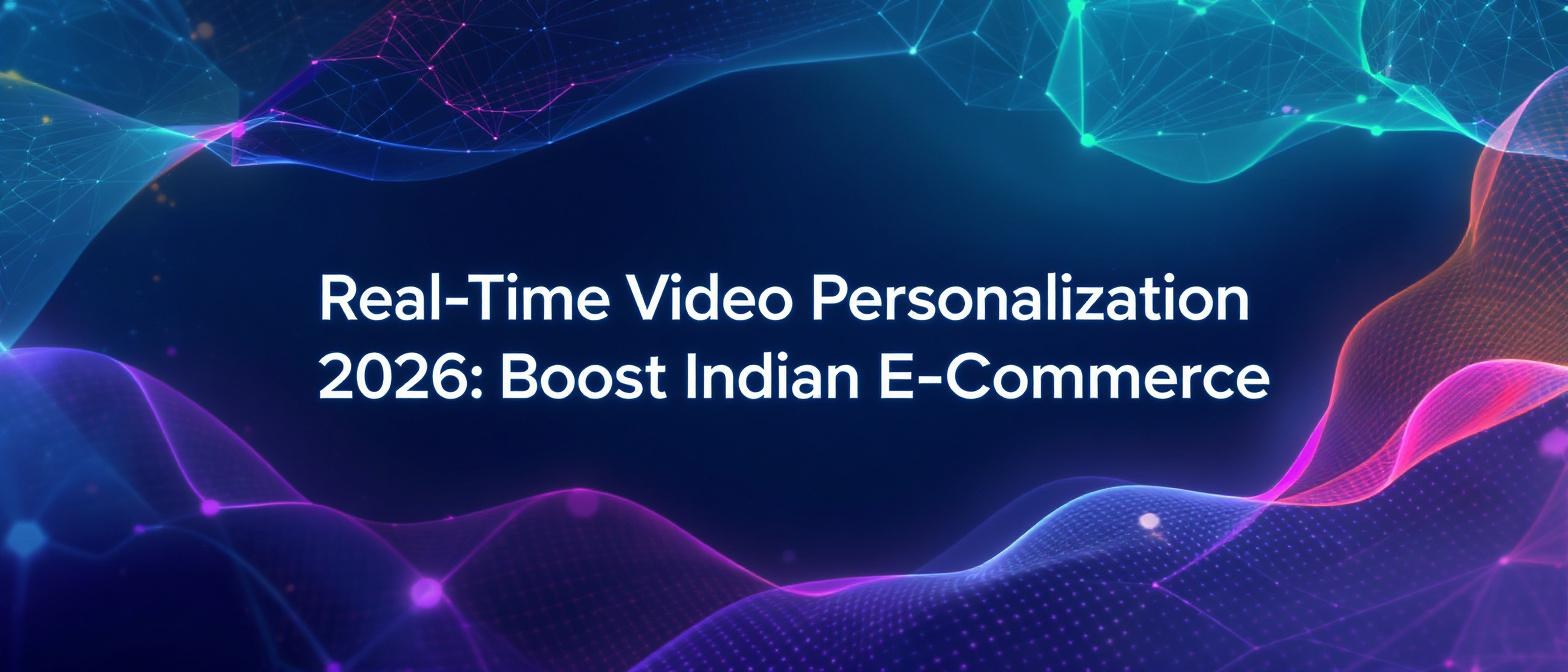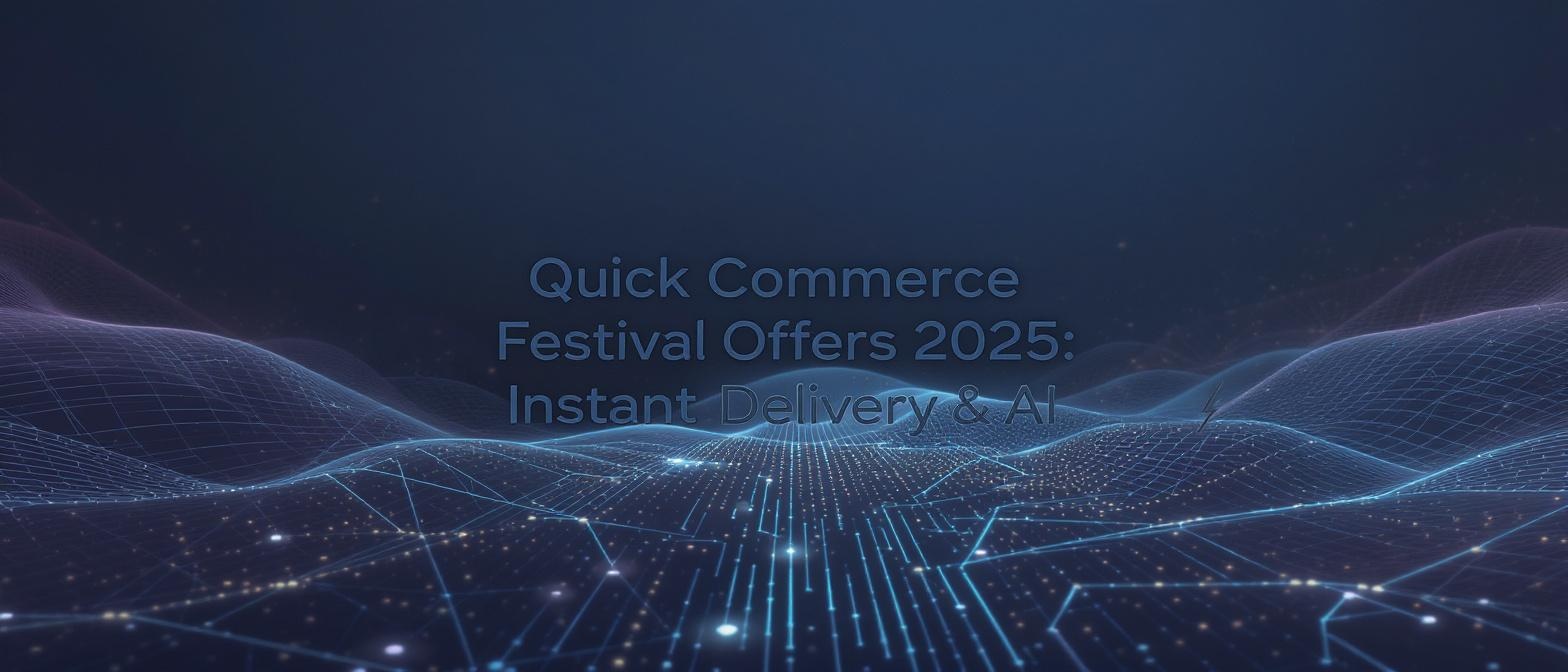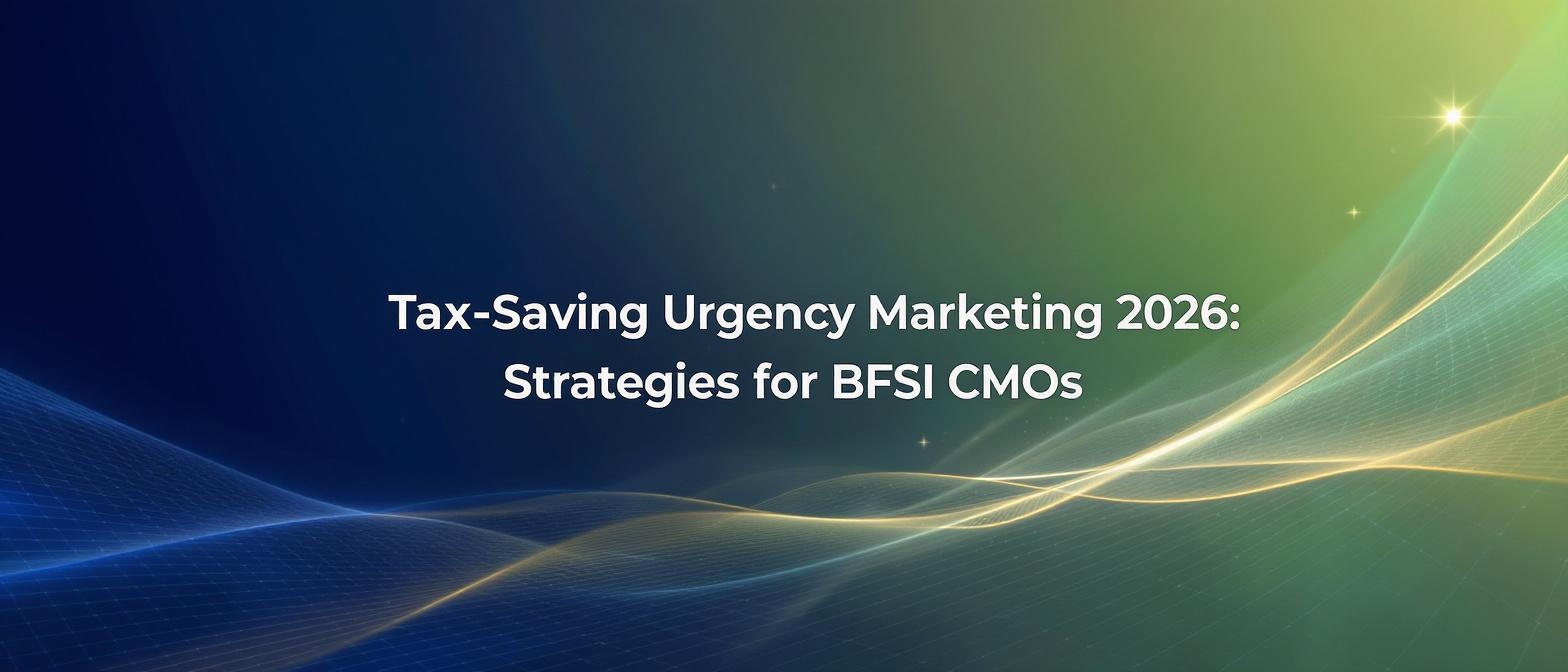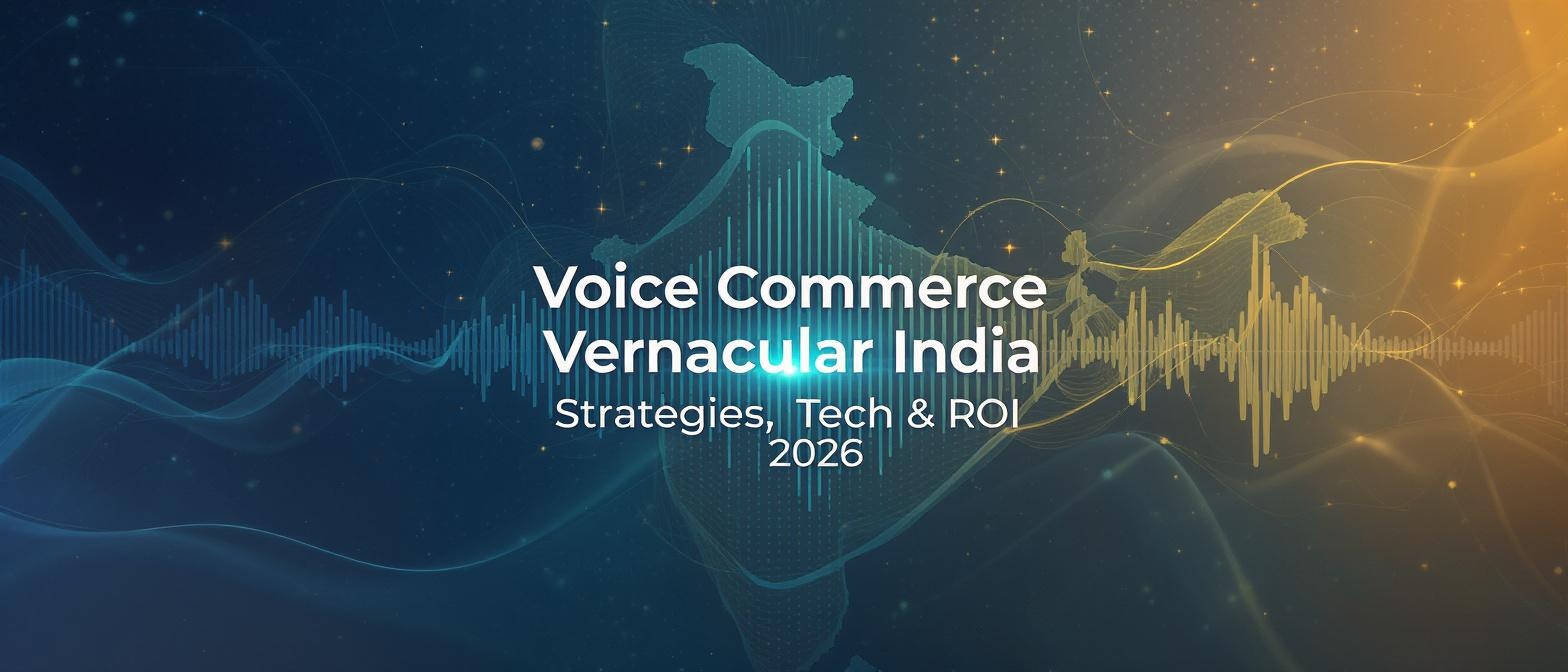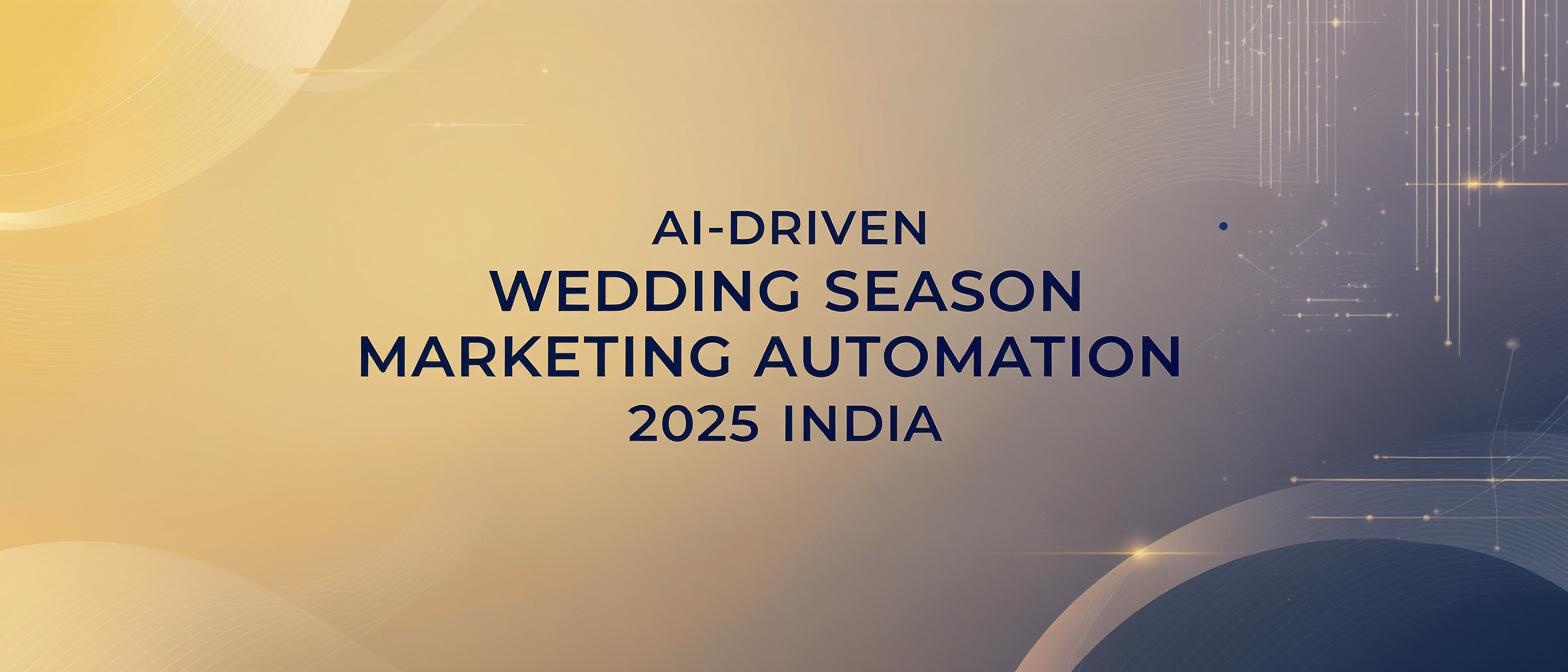How Real-Time Video Personalization E-Commerce 2026 Is Transforming Indian Online Shopping
Key Takeaways
- Real-time video personalization is revolutionizing e-commerce in India by delivering deeply customized shopping experiences.
- AI and ML technologies enable automated, dynamic content assembly—from user data ingestion to final video rendering.
- Personalized videos drive higher engagement, conversions, and loyalty by resonating with cultural and linguistic nuances.
- Shoppable, interactive videos and predictive personalization will shape the future of online retail.
- Implementing personalization strategies can rapidly accelerate ROI, making it a critical step for brands seeking a competitive edge.
As the digital landscape of India evolves at a breakneck pace, a groundbreaking shift is underway, set to redefine the very fabric of online retail. With video content projected to drive over 80% of all online traffic in India by 2026, the era of static, one-size-fits-all e-commerce is rapidly drawing to a close. The future belongs to dynamic, responsive, and deeply individual experiences. This is where real-time video personalization e-commerce 2026 emerges not just as a trend, but as a cornerstone of next-generation digital strategy. It represents the powerful fusion of artificial intelligence and dynamic video, served to each individual shopper at the perfect moment, creating hyper-personalized video shopping journeys that captivate and convert.
For India's burgeoning Direct-to-Consumer (D2C) brands and established e-commerce giants, the mandate is clear: adapt or be left behind. The modern Indian consumer, armed with high-speed internet and a world of choices, demands more than just products; they seek recognition, relevance, and a relationship with the brands they patronize. Harnessing dynamic personalized videos in India is no longer a luxury—it's the essential engine for boosting engagement, skyrocketing conversions, and forging lasting customer loyalty in a fiercely competitive market.
What Is Real-Time Video Personalization?
At its core, real-time video personalization is the sophisticated, on-the-fly assembly of unique video content tailored to an individual user's data, context, and behavior. Imagine a video that greets a customer by name, showcases products they recently viewed, speaks to them in their native language, and presents an offer valid only for them—all rendered and delivered in the milliseconds it takes for a webpage to load. This isn't pre-rendered content; it's a dynamic, living communication channel.
This technology moves beyond simple name insertions. It leverages a complex technical pipeline to create a seamless, cinematic experience that feels uniquely crafted for each viewer.
The Technical Flow Behind the Magic
The creation of a real-time personalized video is a symphony of data and technology, executed in four key stages:
- Data Ingestion: The process begins with data. The system ingests a wide array of user signals in real-time: their demographic profile, browsing history, items left in their cart, geographic location, and customer segment. This rich data forms the foundation for what the video will show and say.
- The Personalization Engine: This is the brain of the operation. Sophisticated recommendation algorithms, often a blend of collaborative filtering and contextual bandits, process the ingested data. The engine instantly decides the optimal script, the most relevant product to feature, the right language, and the most compelling call-to-action for that specific user.
- Video Rendering Pipeline: Once the personalization logic is determined, the video is assembled. This involves pulling from a library of pre-approved assets: a base video template, dynamic text overlays, high-resolution product shots, and a cloned voiceover. Advanced AI technologies like voice-cloning and lip-sync ensure that even if the script and language change, the on-screen avatar or presenter delivers the message flawlessly and naturally.
- Low-Latency Delivery: The final, unique video file is streamed or embedded on the website, app, or in a marketing message. This is achieved through edge-enabled Content Delivery Networks (CDNs), which store assets closer to the user's physical location, ensuring the video plays instantly without buffering, maintaining a high-quality user experience.
For the Indian consumer, who is increasingly accustomed to instant gratification and curated digital environments, this level of real-time video customization is not just impressive—it's expected. It signals that a brand understands their individual needs and values their time, a crucial differentiator in the crowded Indian e-commerce space.
Source: Maxicus, "Why Video Commerce is the Game-Changer for D2C Brands"
Source: CPLuz, "The Top 7 Video Marketing Trends To Watch Out For In 2026"
The Undeniable Business Benefits of Dynamic Personalized Videos for E-Commerce
Adopting a strategy centered on dynamic personalized videos isn't just about technological novelty; it's about driving tangible, measurable business outcomes. For Indian e-commerce, where acquiring and retaining customers is paramount, the ROI of video personalization is compelling and multifaceted.
Skyrocketing Conversion and Average Order Value (AOV)
The ultimate goal of any e-commerce strategy is to drive sales. Personalized video excels here. Recent 2025 data from BrandXR reveals that AI-powered personalization can yield 1.5 to 2 times higher conversion rates compared to non-personalized content. When a customer sees a video featuring a product they were just considering, with a special offer tailored to them, the path to purchase becomes significantly shorter.
Furthermore, it's not just about converting more customers, but also about increasing the value of each transaction. By strategically using personalized product videos at scale to upsell or cross-sell related items, brands can drive up to a 30% lift in Average Order Value (AOV). A video that says, "We see you like these running shoes, here's the perfect moisture-wicking socks to go with them," is far more effective than a generic product grid.
Unprecedented Engagement Gains
In the attention economy, engagement is currency. Generic video ads often suffer from low completion rates as users quickly lose interest. Personalization flips this script. A recent report in The Economic Times highlighted that personalized content can lead to 50% higher video completion rates, particularly when it speaks directly to a user’s language and region. This is especially critical in a linguistically diverse country like India. A shopper in Chennai is far more likely to watch a video to completion if it's in Tamil rather than a generic English or Hindi message.
Forging Deeper, Lasting Loyalty
Transactional relationships are fragile. Relational loyalty is enduring. Hyper-personalized video shopping experiences build a powerful bridge between a brand and its customers. By communicating with users in their local language, referencing regional nuances, and acknowledging their past interactions, brands can build a profound sense of trust and recognition. This emotional connection transforms a one-time buyer into a long-term advocate for the brand, significantly increasing customer lifetime value (CLV).
Source: BrandXR, "AI-Powered Personalization: Personalized Customer Experiences at Scale," May 2025
The Engine Room: The Role of AI & ML in Video Personalization
Artificial Intelligence (AI) and Machine Learning (ML) are the indispensable engines that make real-time video personalization possible at scale. These technologies work tirelessly behind the scenes to analyze data, automate creative processes, and continuously optimize performance, turning a complex concept into a seamless reality for dynamic video content e-commerce.
Real-Time Customer Data Analysis and Segmentation
At any given moment, an e-commerce platform is generating millions of data points. AI/ML models are adept at sifting through this deluge of information in real-time to identify patterns and predict user behavior. These models can perform real-time customer segmentation, predicting a user's purchase intent, identifying their potential price sensitivity, and determining the single best Stock Keeping Unit (SKU) to feature in a video to maximize the chance of conversion.
Automated Creative Variations at Massive Scale
Manually creating thousands, let alone millions, of video variations is impossible. AI automates this entire process. By setting up rules and connecting data fields, a single video template can be used to generate infinite unique versions. This includes dynamically inserting a customer's name, overlaying text in any of India's diverse regional languages, or displaying dynamic pricing and offers based on their loyalty status. Platforms like Studio by TrueFan AI enable marketers to manage these complex campaigns effortlessly, ensuring every user receives a truly one-to-one message.
Breaking Language Barriers with Voice-Clone and Lip-Sync
A significant challenge in the Indian market is its linguistic diversity. AI has elegantly solved this. Advanced voice-cloning technologies can take a single recorded voice and replicate it across numerous languages, maintaining the original tone and inflection. This is then paired with sophisticated lip-sync algorithms that precisely match the on-screen avatar's mouth movements to the new audio track. The result is a perfectly localized video that feels authentic and native to the viewer, a feat that would require enormous production budgets to achieve manually. Studio by TrueFan AI's 175+ language support and AI avatars are a prime example of how this technology is making hyper-localization accessible to all businesses.
Continuous Optimization Through Reinforcement Learning
A key advantage of AI is its ability to learn and improve over time. Reinforcement learning models can be used to continuously A/B test different video variants in the background. The AI learns which combination of script, visuals, offer, and language delivers the best results for different customer segments and automatically begins to favor the winning variations. This creates a self-optimizing system that constantly refines its approach to drive ever-improving ROI.
Source: TrueFan AI, "Social Commerce and Video Integration in India 2026"
Source: Envision eCommerce, "eCommerce Growth in the Digital Age"
Choosing Your Platform: Architecture and Implementation
Successfully implementing a real-time video personalization strategy requires a robust and scalable technology partner. The right e-commerce video personalization platform India not only provides the tools for creation but also ensures seamless integration, enterprise-grade security, and lightning-fast performance.
The Platform Spectrum: Self-Serve vs. API-Driven
Video personalization platforms typically come in two main flavors, catering to different business needs:
-
Self-Serve SaaS (e.g., TrueFan Studio): This model is designed for marketing teams, agencies, and content creators who need speed and flexibility. Think of it as a "Canva for AI videos." Users can log into a browser-based platform and access features like:
- A library of pre-licensed AI avatars.
- Simple script-to-video generation.
- An in-browser editor for adding text, logos, and backgrounds.
- One-click conversion to multiple aspect ratios (for social media, websites, etc.).
- Instant language conversion tools.
-
Enterprise API-Driven (e.g., TrueFan Enterprise): This is the powerhouse solution for large-scale e-commerce operations. It's designed to integrate directly into a company's existing tech stack (CRM, CDP, marketing automation tools) via APIs and webhooks. Key features include:
- Automated video generation triggered by user actions (e.g., cart abandonment).
- Direct publishing to channels like WhatsApp, SMS, and email.
- A powerful, GPU-backed cloud rendering infrastructure for sub-second latency.
- Advanced analytics and reporting dashboards.
Security, Compliance, and Trust
When dealing with customer data, security is non-negotiable. Leading platforms prioritize this through rigorous compliance and content moderation. Look for certifications like ISO 27001 and SOC 2, which are globally recognized standards for information security management. Additionally, robust content moderation filters are essential to prevent the misuse of the technology and ensure brand safety.
A Simple Integration Blueprint
Integrating a video personalization platform into your e-commerce ecosystem can be straightforward:
- Connect Your Data: The first step is to connect your Customer Data Platform (CDP) or CRM to the video platform's API. This allows the personalization engine to access the necessary user data securely.
- Set Up Event Triggers: Define the key user events that will trigger the generation of a personalized video. Common triggers include a user abandoning their cart, browsing a specific product category for a set amount of time, or reaching a new loyalty tier.
- Define Delivery Channels: Determine where the personalized videos will be delivered. They can be embedded directly on your website or app for an immersive on-site experience, or sent out via email, SMS, WhatsApp, or targeted social media ads to re-engage users.
From Data to Dollars: Optimization and Measurement Strategies
Launching a personalized video campaign is just the beginning. The key to long-term success lies in continuous optimization and rigorous measurement. A data-driven approach ensures that your strategy remains effective, fresh, and delivers a sustainable return on investment.
A/B and Multivariate Testing
Never assume you know what works best. The most effective strategies are discovered through testing. Use A/B and multivariate testing to experiment with different elements within your videos:
- Messaging: Test different opening hooks or value propositions.
- Calls-to-Action (CTAs): Compare "Buy Now" vs. "Learn More" vs. "Claim Your 20% Off."
- Dynamic Offers: Test whether a percentage discount, a fixed amount off, or a "buy one, get one" offer drives more conversions.
- Visuals: Experiment with different avatars, backgrounds, or product angles.
By analyzing the performance of these variations, you can systematically identify the most effective combination of creative elements for each audience segment.
Tracking the Right KPIs
To truly understand the impact of your campaigns, you must track the right Key Performance Indicators (KPIs). Go beyond vanity metrics and focus on a dashboard that measures true business value:
- View-Through Rate (VTR): What percentage of users watch the video to completion?
- Click-Through Rate (CTR): How many viewers click the CTA within or after the video?
- Conversion Lift: Compare the conversion rate of users who saw a personalized video against a control group who did not.
- AOV Impact: Track the average order value for customers who engaged with a personalized video.
Solutions like Studio by TrueFan AI demonstrate ROI through comprehensive analytics dashboards that make it easy to track these critical metrics and justify marketing spend.
Maintaining Creative Freshness
Even the most effective video can suffer from creative fatigue if users see it too often. It's crucial to have a strategy for keeping your content fresh. Automate "reshoots" by setting up API triggers that periodically update the scripts, offers, or featured products in your video templates. This ensures that returning customers are always seeing new, relevant content.
Managing Frequency and User Fatigue
Personalization is powerful, but it should be used judiciously. Bombarding users with personalized videos can feel intrusive and lead to fatigue. Implement frequency capping rules to limit how often a single user can receive a personalized video within a specific timeframe. This respects the user's experience and ensures that each interaction remains impactful and welcome.
Source: TrueFan AI, "Social Commerce and Video Integration in India 2026"
Real-World Impact: India-Focused Case Studies
The transformative power of real-time video personalization is not just theoretical. Leading Indian brands are already leveraging this technology to achieve remarkable results, proving its efficacy in the diverse and dynamic local market.
Zomato: Driving Order Frequency with Hyper-Personalized Offers
Food delivery giant Zomato utilized hyper-personalized video to engage its vast user base. By integrating with their user database, they were able to send videos in vernacular languages that featured personalized dining offers based on a user's past order history and favorite cuisines. These videos, delivered directly via the WhatsApp API, felt like a personal recommendation from a friend. The results were staggering: Zomato achieved a 25% uplift in order frequency from the user segments that received the personalized video campaigns.
Hero MotoCorp: Boosting Test Drives with Dynamic Demos
Hero MotoCorp, one of India's largest two-wheeler manufacturers, faced the challenge of converting online interest into physical dealership visits. They deployed a dynamic video strategy where users who showed interest in a particular motorcycle model on their website were retargeted with a personalized video. The video featured that specific model, highlighted its key features, and included a dynamic CTA to book a test drive at the user's nearest dealership. This highly relevant and timely approach boosted test-drive sign-ups by an incredible 40%, demonstrating the power of personalization in high-consideration purchases.
These case studies underscore a critical point: when implemented correctly, personalized video ads in e-commerce in India create a win-win scenario. The customer receives a more relevant and engaging experience, and the brand achieves significant, measurable uplifts in its key business metrics.
Source: TrueFan AI, "Social Commerce and Video Integration in India 2026"
The Road to 2026: Future Trends and Predictions
The technology underpinning real-time video personalization is constantly advancing. As we look towards 2026, several exciting trends are set to further revolutionize the hyper-personalized video shopping experience, making it more interactive, immersive, and intelligent.
The Rise of Shoppable and Interactive Video
The line between content and commerce will continue to blur. Future personalized videos will be fully interactive. Imagine a video where a customer can:
- Click on a product within the video to instantly add it to their cart.
- Use embedded "buy buttons" to complete a purchase without ever leaving the video player.
- Participate in live Q&A sessions with a brand's AI avatar during a product launch.
This evolution will transform passive viewing into an active shopping experience, dramatically reducing friction in the buying process.
AR/VR-Powered Immersive Demos
Augmented Reality (AR) and Virtual Reality (VR) will merge with real-time personalization to create incredibly immersive product demonstrations. A customer interested in a new sofa could receive a personalized video that not only describes the product but also allows them to use their phone's camera to place a 3D model of the sofa in their own living room, customized in the exact fabric and color they were browsing.
From Reactive to Predictive Personalization
Current personalization is largely reactive, responding to actions a user has already taken. The next frontier is predictive personalization. Using time-series machine learning models, platforms will be able to accurately forecast a customer's future needs and proactively send them a personalized video with the next-best offer before they even begin searching for it. This could be based on their purchase cycle, seasonal trends, or the behavior of similar users.
The Dawn of Voice-Activated Personalization
With the proliferation of smart speakers and voice assistants in Indian homes, voice will become a key interface for e-commerce. In the near future, a user might say, "Show me the best deals on running shoes in my size." In response, their smart display or television could instantly play a personalized video, triggered by the voice query, showcasing available shoes and a unique offer, complete with a voice-based checkout process.
Source: CPLuz, "The Top 7 Video Marketing Trends To Watch Out For In 2026"
Source: McKinsey, "AI in the workplace: A report for 2025"
Conclusion: The Inevitable Future of Indian E-Commerce
The evidence is overwhelming. The strategic adoption of real-time video personalization e-commerce 2026 is not a matter of 'if', but 'when' for any brand serious about thriving in the Indian market. This technology is a paradigm shift, moving marketing from broadcasting a single message to many, to having a unique, one-to-one conversation with every single customer. By embracing dynamic personalized videos, businesses can unlock unprecedented levels of engagement, drive significant conversion uplift, and build the kind of deep, lasting customer loyalty that defines market leaders.
The journey to 2026 will be defined by data, powered by AI, and delivered through video. The brands that act now to integrate these capabilities into their core strategy will be the ones who capture the hearts, minds, and wallets of the next generation of Indian shoppers.
Ready to take the first step into the future of e-commerce? Explore TrueFan Studio for quick and easy pilots, or schedule a consultation with our team to discuss a custom enterprise API integration for your platform. The transformation of Indian online shopping is here. Don't just watch it happen—lead it.
Frequently Asked Questions
1. How does real-time video personalization handle data privacy in India?
Leading platforms are built with a privacy-first approach, adhering to global and local data protection regulations. They use anonymized data and secure API connections to ensure that Personally Identifiable Information (PII) is handled with the utmost care. For instance, the personalization engine might receive a user ID and associated attributes to generate a video, but it won't store the raw PII, ensuring compliance and customer trust.
2. What is the typical time-to-value for implementing a video personalization platform?
The time-to-value can vary based on the integration's complexity. For a self-serve platform, a marketing team can start creating and launching campaigns within a single day. For a deeper, API-driven enterprise integration, the process might take a few weeks, from initial data mapping to launching the first automated trigger-based campaigns. However, the ROI is often seen quickly, with measurable lifts in engagement and conversion visible within the first quarter of implementation.
3. Can this technology work for both large marketplaces and small D2C brands?
Absolutely. The technology is scalable and adaptable. Small D2C brands can leverage self-serve platforms to create highly engaging social media ads and email campaigns without needing a large tech team. Large marketplaces can use enterprise-level APIs to automate personalization for millions of users across their entire customer journey, from onboarding to post-purchase engagement.
4. How does vernacular language support impact ROI in Tier-2 and Tier-3 cities?
It has a massive impact. Consumers in Tier-2 and Tier-3 cities show significantly higher engagement and trust with content presented in their native language. By delivering personalized videos in vernacular languages, brands can overcome language barriers, build stronger emotional connections, and unlock huge, previously untapped market segments. This directly translates to higher conversion rates and customer lifetime value in these crucial growth markets.
5. What are the first steps for a brand to pilot a personalized video campaign?
The best first step is to identify a clear, high-impact use case. A cart abandonment campaign is often a great place to start, as it has a direct and measurable impact on revenue recovery. Brands can then use a platform to create a simple video template, connect it to their cart abandonment trigger, and run an A/B test against their existing email or SMS reminders. Solutions like Studio by TrueFan AI make this process simple, allowing brands to pilot a campaign quickly and gather data to build a business case for wider implementation.

